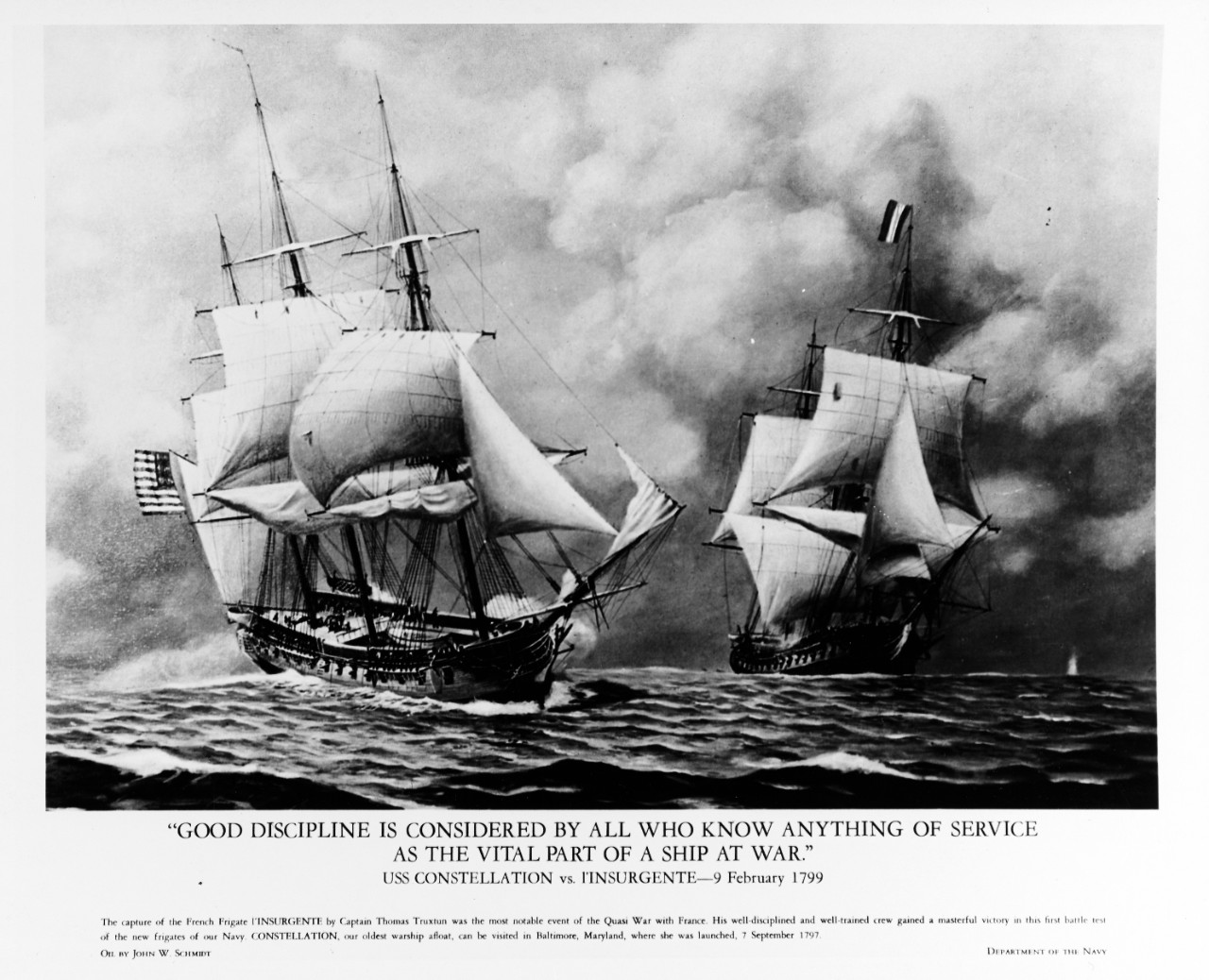Naval Documents Related to the Quasi-War Between the United States and France
Navy Department Office of Naval Records and Library
The Quasi-War with France was selected as the subject of the first documentary history of the early U.S. Navy by the Office of Naval Records and Library because, at the time (the mid-1930s), the Navy Department's archival holdings, together with those in other available naval collections, were still very incomplete for the time prior to 1798. Moreover, that year marked the beginning of the first extensive U.S. naval operations after the adoption of the Constitution. The volumes covering the Quasi-War cover time periods ranging from three months to a year. A consistent thread throughout is the initial unpreparedness and then steadily growing strength and effectiveness of the young republic’s Navy. In clashes with French privateers and naval vessels, American officers, enlisted personnel, and their ships were melded into a professional force to be reckoned with. Moreover, the foundations were laid for the Navy’s operational successes against the piratical Barbary states and, later, against the British Royal Navy in the War of 1812.
- Volume I: Naval Operations from February 1797 to October 1798, published 1935 (PDF in preparation)
- Volume II: Naval Operations from November 1798 to March 1799, published 1935 (PDF in preparation)
- Volume III: Naval Operations from April 1799 to July 1799, published 1936 (PDF in preparation)
- Volume IV: Naval Operations from August 1799 to December 1799, published 1936 (PDF in preparation)
- Volume V: Naval Operations from January 1800 to May 1800, published 1937, (PDF in preparation)
- Volume VI: Naval Operations from June 1800 to November 1800, published 1937, (PDF in preparation)
- Volume VII: Naval Operations from December 1800 to December 1801, published 1937 (PDF in preparation)
The antecedents to this series are interesting. On 15 March 1935, the U.S. Congress approved $10,000 (equivalent to $211,500 in 2023 dollars), “to begin printing historical and naval documents including composition, clerical copying in the Navy Department, and other preparatory work.” In the depths of the Great Depression, when appropriations for Army and Navy were at a minimum, this was a not inconsiderable expenditure that, nonetheless, had received support in the highest echelon of government:
The many-sided lessons locked up in old naval manuscripts are well worthy of public attention. Our early naval and maritime history is closely associated with the country's pioneer settlement and expansion, with the winning of its independence and with its subsequent security in very precarious times.
From the beginning also the sea was a direct source of sustenance, the greatest means of domestic transportation, and a prime agency of economic welfare through profitable overseas commerce. The integrity of all this throughout our earlier history rested upon naval protection.
In addition the early Navy played a notable part in the development of the national spirit. Nonpartisan and nonsectional in sympathy, it devoted itself exclusively to the promotion and defense of broad national interests. Its faithful and arduous service together with brilliant victories served constantly to stimulate national pride, patriotism and unity.
It may therefore be said that in many senses our naval forces, including both the regular and irregular armed ships, were among the important makers of the Nation.
For these reasons I have been glad to initiate the publication of naval manuscript source material in order that their contents may become general fully accessible for research, and also to insure against loss of their substance through possible destruction of the originals.
I have an especial interest in the publication of manuscript records heretofore practically inaccessible to the public because of my own long time research into all forms of American Naval records.
In 1913, soon after I went to the Navy Department, I discovered a large number of old wooden cupboards under the eaves of the State, War and Navy Building—shelves lined with the "Captain's letters" from the Commanding Officers of our earliest ships.
Since those days the Office of Naval Records has been adequately housed and the records themselves have been properly safeguarded and catalogued.
The establishment, at my request, of a special fund by the Seventy-third Congress will, I hope, make possible the printing of the more important manuscript material relating to the Navy, now in the possession of the Government.
Franklin D. Roosevelt
THE WHITE HOUSE,
13 June 1934.



